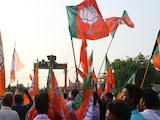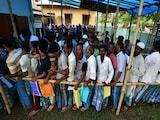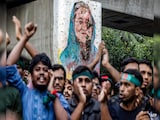Bihar has wrapped up its elections, and the NDA has emerged victorious. The upcoming 18th assembly will have 243 members, which includes 214 men and 29 women, a slight improvement in gender representation compared to 2020 which had only 26 women. However, women still make up just 12 per cent of the House, showing that progress on this front remains slow.
Criminal Cases: Lower Than Before, But Still High
One of the most striking trends is the decline in MLAs with criminal records. In 2020, 68 per cent of legislators had declared criminal cases. In 2025, that number has dropped to 53 per cent. Serious criminal charges have also fallen, from 51 per cent to 42 per cent. While this is progress, the reality remains stark: nearly half the assembly faces serious allegations.
Party-wise, the picture is mixed. The BJP has seen a slight rise in MLAs with criminal cases, while the RJD and Congress have recorded declines.
This trend reflects a broader pattern seen in recent elections across India, where voters appear to prioritise winnability and local influence over clean records. Despite repeated calls for electoral reforms, candidates with criminal backgrounds continue to dominate, especially in states where caste and community networks play a decisive role.
Wealth: Bihar Assembly Gets Richer
If crime is going down, wealth is going up. The new Assembly is wealthier than ever: 90 per cent of MLAs are crorepatis, up from 81 per cent in 2020. This is the highest proportion so far-nine out of ten lawmakers own assets worth over Rs 1 crore.
The wealth distribution has shifted too. MLAs with assets above Rs 5 crore dipped slightly from 25 per cent to 42 per cent, but the mid-range bracket-assets between Rs 50 lakh and Rs 2 crore-dropped from 30 per cent to 15 per cent. This suggests that while ultra-rich candidates remain influential, the number of moderately wealthy politicians has surged.
The Growing Wealth Gap
The wealth gap between Bihar's MLAs and its citizens has widened dramatically over the past elections. Average assets of MLAs have surged from Rs 82 lakh in 2010 to Rs 9.02 crore in 2025, a jump of more than 10 times, while the state's per capita income rose just threefold from Rs 19,111 in FY11 to Rs 62,337 in FY24. This means an MLA today is nearly 1,500 times richer than the average citizen, highlighting the deepening economic divide between elected representatives and the people they serve.
At the top of the wealth pyramid stands Kumar Pranay of BJP from Munger, who declared assets worth a staggering Rs 171 crore. Close behind are JD(U) leaders Anant Kumar Singh, with assets worth Rs 101 crore, and Dr Kumar Puspanjay, whose assets are worth Rs 94.5 crore.
On the other end, the poorest MLA is Murari Pasavan of BJP from Pirpainti, with just Rs 6.6 lakh in declared assets. A little richer than him are two BJP leaders, Mahesh Paswan from Agiaon whose wealth is Rs 8.5 lakh and Sujeet Kumar from Rajnagar who owns assets worth Rs 11 lakh.
This assembly reflects two clear trends: money power is rising, and while criminal cases are fewer than before, they still cast a long shadow over Bihar politics. Gender representation remains almost stagnant, and the dominance of wealthy candidates underscores how deeply money and muscle continue to shape electoral outcomes.















